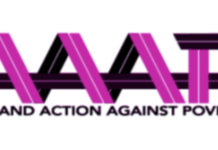Headline: Building Community Resilience: speech to Rotary Club of Hornby, Wednesday, 12 June 2013 at Wigram Manor
Thank you for the invitation to speak to your Rotary. I bring greetings from your MP, Megan Woods who has brought such energy to her role as the MP for Wigram since she was elected in the last election. She is already Labour’s spokesperson on Tertiary Education and has been promoted to the top 20 in our shadow executive.
I am a member of the Christchurch North Rotary Club, which is the one I joined when the Christchurch East Club closed down.
It seems ironic that a service club would close, particularly in the east, when there is so much to do.
But actually it reflects the hidden cost of the earthquakes:
- The loss of venues for meetings
- The time and effort to find alternatives
- The increased costs that usually entails
- The time members have to devote to their own personal situation, EQC, insurance – it all takes time.
- The loss of income from business interruption not covered by insurance. I’d never heard of de-population before. Apparently it’s the insurance companies’ “get out of jail free” card.
Add to this the sudden aging of once sprightly retired members and the emergence of stress-related complaints (hives, shingles, blood pressure) and even those who gather with service to others at our heart, it can all be a bit much.
I admire the clubs that have continued and have gone from strength to strength, but challenges facing the clubs who live amongst the worst of it are sometimes not quite apparent to themselves let alone those on the other side of the city.
This shows that groups and communities can collectively experience stress in ways that may not be obvious. And it is as I say a hidden cost. Fortunately there is a solution, and I will come to that.
I heard a psychologist recently who described the expression “running on empty” – by reference to the separate tank you could flick over to in order to get you to the nearest pump. His point was this tank is separate and doesn’t automatically refill when you fill your tank with petrol. We have a lot of people in this city running on empty right now and there are not necessarily outward signs for us to notice.
Sir Peter Gluckman, the Prime Minister’s Chief Science Adviser, prepared a report for the government 3 months after the February earthquake. He said the potential exists for the emotional effects of disaster to cause as great a degree of suffering as do the physical effects such as injury and loss of property or income. He said:
“The earthquake was a disempowering event – an event that individuals had no control over and leaves them essentially with no control over how they live. The need to regain some sense of control over one’s life is central to the recovery process. Disempowerment essentially reinforces the initial trauma.”
He specifically warned that a lack of community participation in the recovery planning process would impede the recovery.
He talked about post-traumatic stress syndrome. I think we are allowed to say that many of us are in a state of shock. I don’t want this to sound worse than it is, because there is a word that for me offers all the hope for the future from a community sense – and Rotary Clubs and other community organisations are very much a part of that – and that word is resilience.
I know many people cringe when they hear it. And that’s because the people using it don’t use it in its correct sense. They mean stoicism. And we are stoic. Someone says “how are you going” – we say “fine, ok” – and when you’re not – “there’s always someone so much more worse off than me”. But that phrase often belies the depth of distress under the surface.
Everyone remembers the immediate aftermath of the earthquakes and how amazing it was – the west came and looked after the east. The Farmy Army and the Student Volunteer Army and all the groups made us feel part of a Canterbury family that really knew how to look after each other when we needed help.
The thing is we still need help, but the emergency is over, the dust has settled, the immediate response is a memory. The third winter is approaching. This is the difference between response and recovery – one is the sprint, which relies on adrenalin; the other is the marathon, which relies on stamina.
But here is the true definition of resilience:
the ability to prepare and plan for, absorb, recover from plus more successfully adapt to adverse events”.
(I would add the capacity to co-create the new kind of normal.)
I actually think there are many people and community groups in Christchurch that meet this definition of resilience. And it is not too late to make this a driver of where we want to be.
The United States’ National Research Academy wrote the report ‘Disaster Resilience: A National Imperative’. This is something they know they must do. We’re talking about ‘nice-to-haves’ in the context of a $40B rebuild – but we are not talking about resilience as the must have.
This report confronts the topic of how to increase the nation’s resilience to disasters through a vision of the characteristics of a resilient nation in the year 2030. This is what a more resilient nation would look like in 2030:
- Every individual and community in the nation has access to the risk and vulnerability information they need to make their communities more resilient.
I remember the community meetings where the older residents said they knew Pacific Park should never have been built. We cannot afford to continue to under-estimate the value of local knowledge.
- All levels of government, communities, and the private sector have designed resilience strategies and operation plans based on this information.
Who is the best to develop a tsunami evacuation plan – the coastal community that will be wiped out if they don’t get to high enough ground quickly enough or an expert from the council or civil defence? Obviously the community needs to lead the work, with the experts providing advice and support.
- Proactive investments and policy decisions have reduced loss of lives, costs, and socio-economic impacts of future disasters.
This is about building social capital. Most people who are saved in disasters are saved by neighbours, co-workers and passers-by. Knowing this would you invest dollars in USAR capability or making sure every taxi-driver had a first-aid certificate.
- Community coalitions are widely organized, recognized, and supported to provide essential services before and after disasters occur.
This is actually about doing things for ourselves. Situation reports can be rapidly put together in neighbourhoods and reported to the emergency operations centre. Trusted community leaders can be the information conduit in and out.
- Recovery after disasters is rapid and the per capita federal cost of responding to disasters has been declining for a decade.
$1 spent on disaster risk reduction is $4 saved in recovery.
- Nationwide, the public is universally safer, healthier, and better educated.
That is the legacy we could leave the nation.
We have a chance of a lifetime to turn our disaster into the most wonderful platform not just in terms of what the newest city in the world will be like in terms of its built environment, but more importantly what its communities will be like.
This is an opportunity to build capacity in all our communities so we can do things for ourselves, which brings me back to Rotary.
This organisation has its roots in Chicago where young men settled away from their hometowns – they started to meet rotating around the different offices, hence the name Rotary. They created their own sense of community in a home away from home kind of way.
They brought their small town values with them, where neighbours just help each other out because that’s what they do. And this is the form of reciprocity that isn’t to and fro – it goes around – where someone helps someone who helps else.
We recreated the old fashioned values throughout Christchurch after the earthquake. And Rotary stood along the emergent groups. I was so proud when Rotary presented the SVA with the t-shirts with the shovel motif that means so much. Instead of Rotary blue, the t-shirts were Canterbury red.
If I were designing our civil defence system in light of our experience, I wouldn’t start from the top down. I would start from the grassroots up.
I would invite all the groups that led the community response and ask them to create a template and then workshop it. I think Civil Defence could be rebuilt on the basis of Residents Associations and Neighbourhood Support with service clubs, community groups, sports clubs and faith based organisations working with these groups. Imagine how much better prepared we could be. And imagine how much stronger our communities would be.
Interestingly everyone that I have spoken to about communities writing their own plans (with help from Central and Local Government plus the private sector) says that it is not the plan, but the planning process itself that strengthens the whole community.
So that’s my message. Let’s start writing those plans.
We stand at a crossroads in this city. I believe it is time that we reclaim the word resilience and own it.
What a legacy that would be, not just for Christchurch, but for New Zealand.
—





